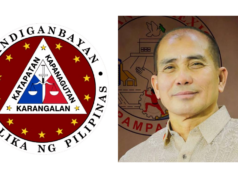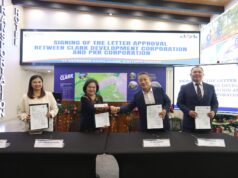CLARK FREEPORT – An executive order (EO) reportedly to be issued by Malacanang that would declare as off-limit zones the coastal areas hit by the recent typhoon Yolanda has this early generated protests from fisherfolk amid estimates that some nine million of them would be adversely affected.
“The pending executive order will provoke a major showdown between nationwide fisherfolk and the government. Local chapters of the fi sherfolk alliance Pambansang Lakas ng Kilusang Mamamalakaya ng Pilipinas (Pamalakaya) in Eastern Samar and Leyte, Northern Negros, Panay and Northern Cebu are gearing for protest moves against it,“ said Pamalakaya in a statement.
Pamalakaya said it is poised to question before the Supreme Court the constitutionality of the EO once it is issued. Pamalakaya Vice Chairperson Salvador France claimed that the “intention of the Aquino government is to remove fishing communities and contain fi shing activities to give way to construction of economic zones in Yolanda-stricken communities.”
The EO is reportedly titled “Adopting Fisherfolk Shelter for Stewards as National Strategy to Ensure Safe and Decent Settlement in Coastal Communities and Establishing Supporting Mechanisms for its Implementation.”
Pamalakaya expressed suspicion that this measure was designed to accommodate proposed House Bill 3640, or the Tacloban City Special Economic Zone Act of 2013, filed by 10 lawmakers fromthe independent bloc led by Leyte Rep. Martin Romualdez.
France noted that the bill cited “physical, geographic and natural attributes of the Tacloban City coastline area that can make the creation of a freeport ideal” as the bill cited that the “Tacloban port was a haven for international ships and even carriers as evident during the relief operations of some foreign countries in the aftermath of typhoon Yolanda last November 8, 2013.”
Pamalakaya said “the Aquino administration will soon promulgate an executive order that would prevent, regulate or contain small-scale fishermen from pursuing their fishing activities and from enjoying settlement and housing rights along coastal communities.”
“The EO declaring coastal communities as off-limit zones is meant to displace us and deny our rights to livelihood and social justice. On the other hand, the absolute bias of the EO is clear– that the areas recently damaged by Supertyphoon Yolanda will be converted into economic zones to accommodate big business in accordance to the national land and water use policy of the state under the umbrella and direction of Public-Private Partnership (PPP) agreement,” Pamalakaya added.
“The Philippine Economic Zone Authority (PEZA) is planning to build a new special manufacturing area in
typhoon-ravaged Leyte under the pretext of rehabilitation and reconstruction process in Eastern Visayas,” he added.
France cited sources confi rming that the PEZA has “already identified a 10-hectare property that would be a possible site for the light industry, low-technology economic zone. In addition, PEZA will also look into applications for special economic zones in the area so that the reconstruction and provision of jobs would be fasttracked.”
The group said the EO “has a potential to remove over nine million fi shermen and coastal people or about 10 percent of the country’s population.” “Once signed by the President, it will legalize the removal and demolition
of fi shing villages. The EO on fi sh settlement is an open declaration of war against the Filipino fishing community,” Pamalakaya said.
France said that in justifying his EO, Pres. Aquino had cited the need for Filipinos to learn from painful lessons of Yolanda and other recent devastating typhoons noting that the President has also bared that the DENR had marked “danger zones” in many coastal areas based on the geo-hazard mapping of the Mines and Geosciences Bureau.
Pamalakaya lamented that “while President Aquino is agitated in removing more than 9 million people along coastal areas in the country, it is extremely obsessed in selling coastal areas to private corporations and foreign companies engaged in large-scale reclamation, black sand mining, ecozone projects and tourism development
programs.”




